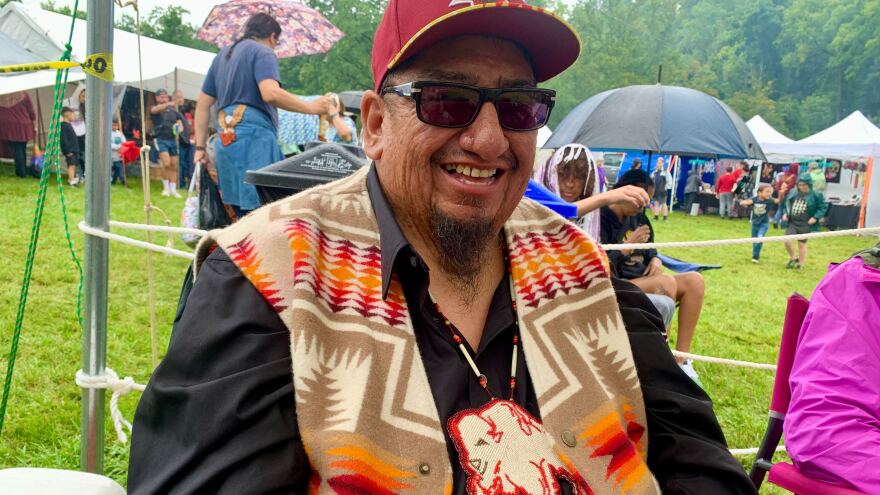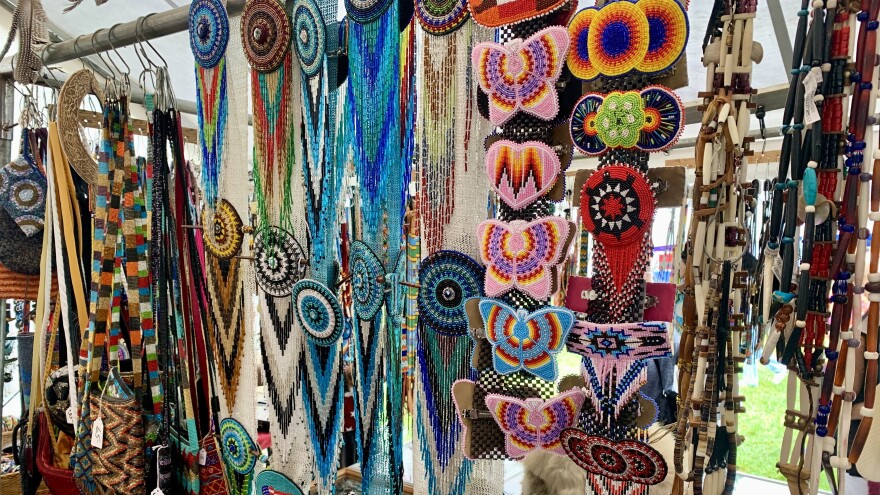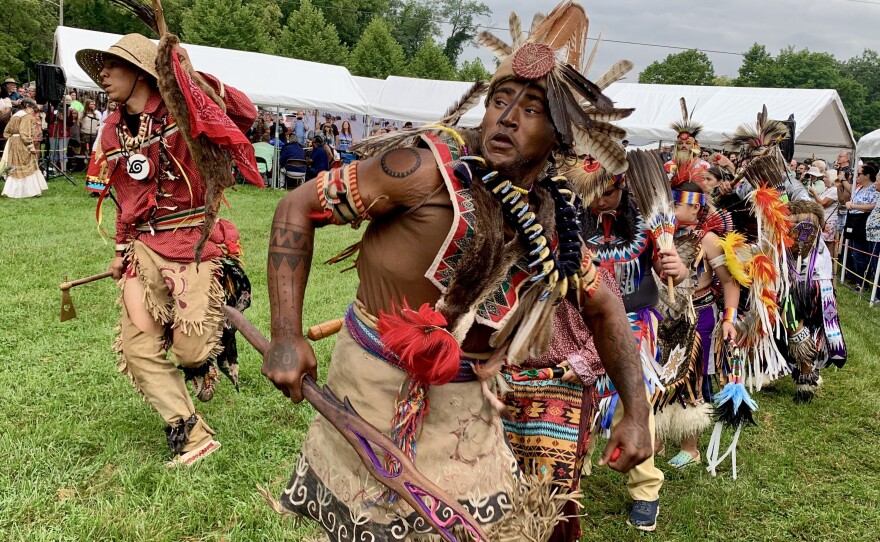ALLENTOWN, Pa. — Despite the rain, many people gathered in Allentown on Saturday to celebrate the Indigenous cultures of the Lehigh Valley and beyond.
The Museum of Indian Culture this weekend hosted its 44th annual Roasting Ears of Corn Festival, which celebrates the corn harvest.
The two-day festival serves as a fundraiser for the museum. Representatives from about 30 different Indigenous nations come to Allentown for it, Museum of Indian Culture Executive Director Pat Rivera said.
“It's a way that tribes come together and are united as one people with one voice."Museum of Indian Culture Executive Director Pat Rivera
“It's a way that tribes come together and are united as one people with one voice, and yet they're so different in their own cultures,” Rivera said.
The event is the state's longest-running Native American festival. It typically draws 5,000 people annually.
But Rivera said Saturday saw “about half” of the typical attendance due to rain, which came in bursts of downpours that delayed performances.
Sunday is forecasted to have heavy rain and potential thunderstorms in the afternoon and evening.
The festival will continue Sunday from 10 a.m. to 6 p.m. at the Museum of Indian Culture, 2825 Fish Hatchery Road.
Admission is $10 for adults, $7 for seniors and ages 13-17, and free for ages 12 and younger.
Festival highlights
Rivera said the most popular parts of the festival are the performances: fire dancing, hoop dancing, drumming and more.
The festival starts with a Grand Entry, with dancing, posting flags and honoring the veterans in the crowd.
David White Buffalo of the Lakota Sioux Nation emcees the event. He has been attending the Roasting Ears of Corn Festival for about 20 years.
“It’s important to keep the culture alive and let people know that the Native Americans are still alive,” White Buffalo said. “We’re still here.”

Visitors are allowed to take photos and videos of most of the performances, except for some ceremonial dances. White Buffalo will announce if photography is not allowed.
Rivera said guests must always ask before taking pictures of people in regalia when they are not performing.
About 30 vendors sell handmade products like sweetgrass, handcrafted Zuni and Navajo silver jewelry, Wampum jewelry, beadwork, kachina dolls, pottery and other artisan goods.

One of the vendors is Carol Sobolewski of the Abenati Nation. She makes dream catchers and sells many other artisan goods from Indigenous artists.
“It’s a way to experience other people’s culture,” Sobolewski said of the festival.
Other activities include face painting, pony rides, an artifact display and demonstration of different artisanal trades.
“The festival is very family-oriented. We want to make sure people of all ages can enjoy it,” Rivera said.
Staff writer Micaela Hood contributed to this report.








